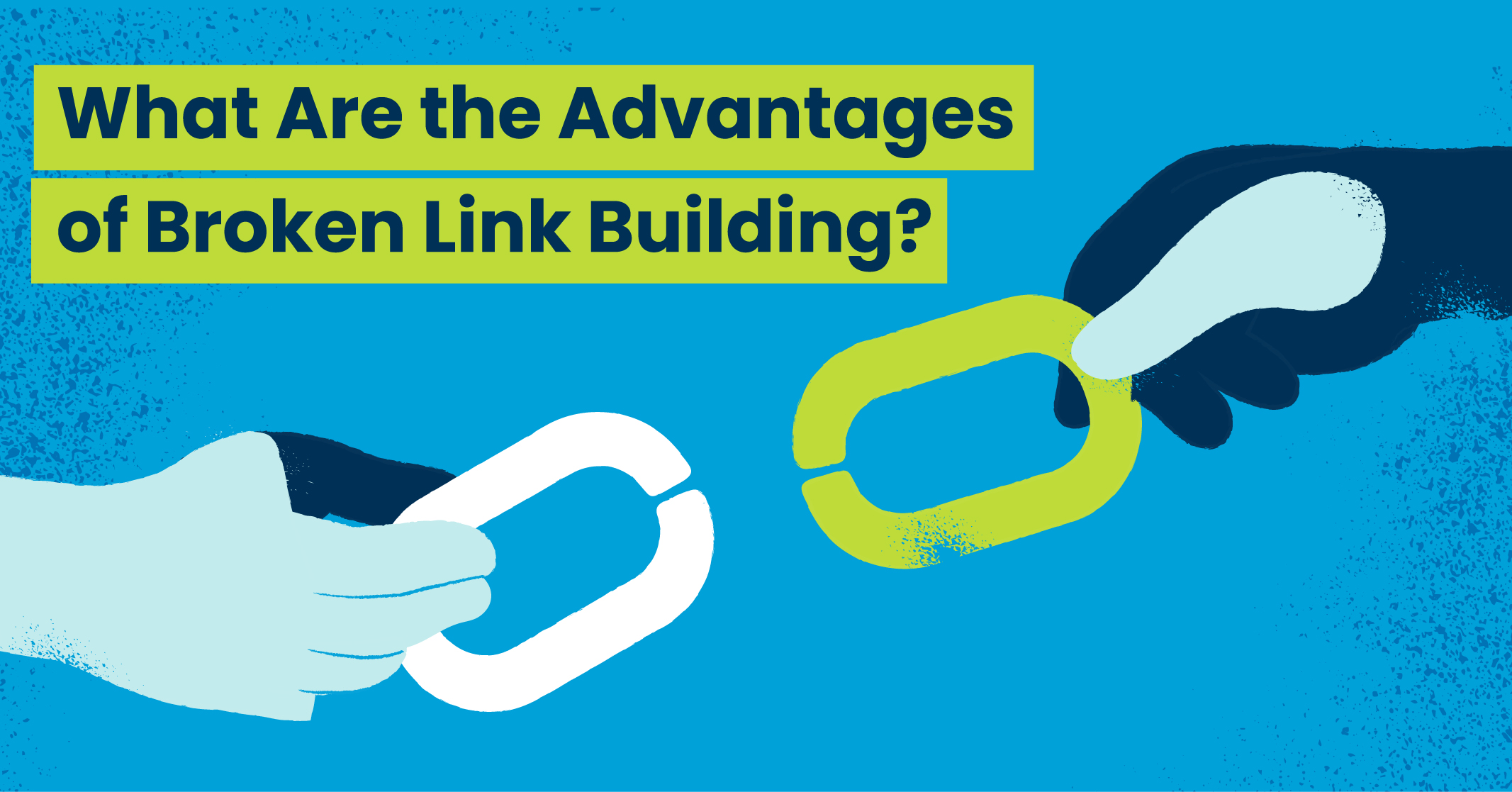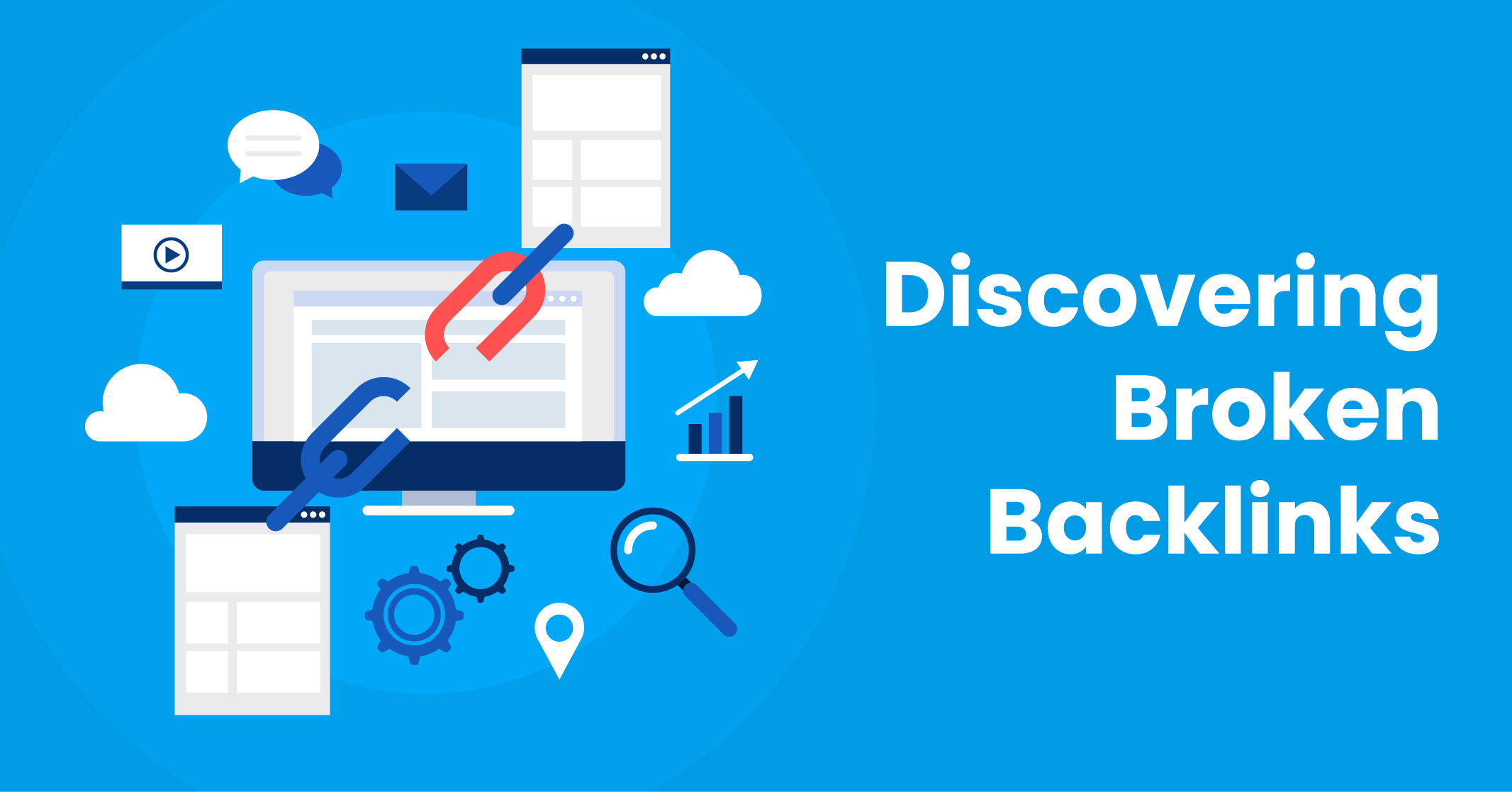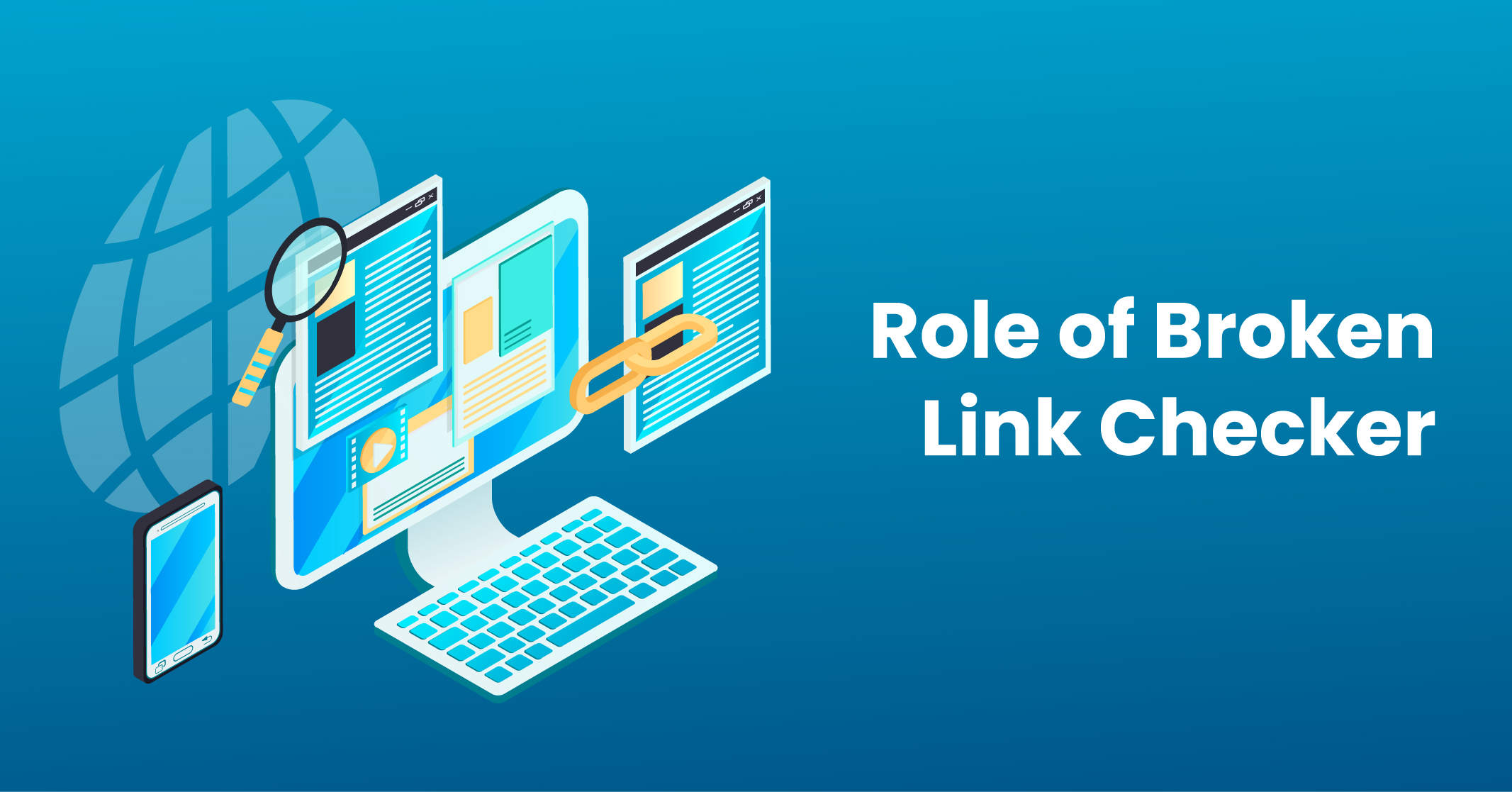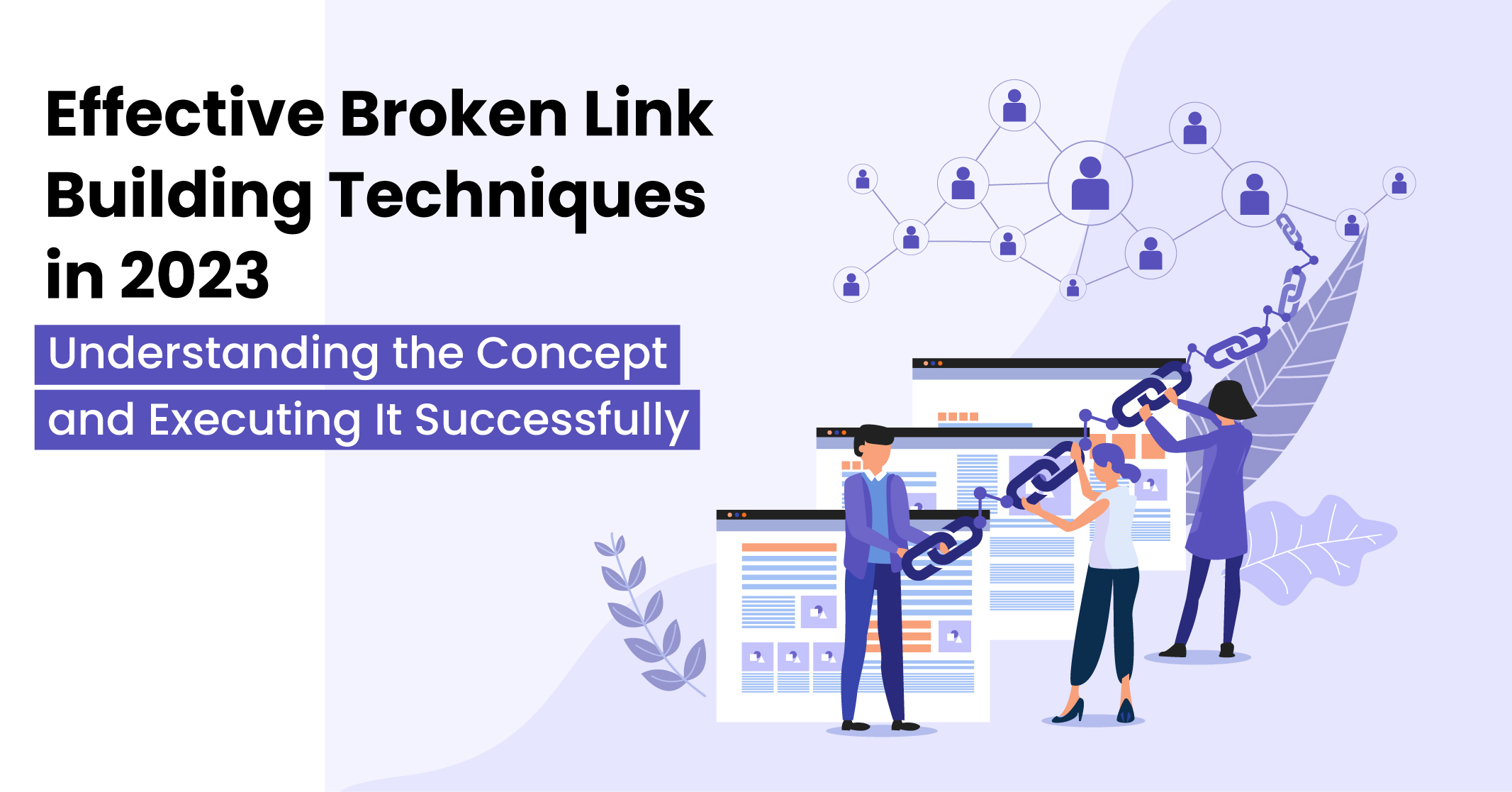Effective Broken Link Building Techniques in 2023: Understanding the Concept and Executing It Successfully
What is Broken Link Building?
Broken link building in SEO involves the identification of inactive or non-functional links on external websites and subsequently persuading the website administrators to replace these broken links with functional ones that lead to your website.
Click Here – Free 30-Minute Strategy Session
Be quick! FREE spots are almost gone for this Month
Free Quote
A link is considered broken when it directs users to an inaccessible page, often indicated by a 404 Not Found error. In such cases, you can provide the website with an alternative resource to link to. Additionally, it is also possible to seek out other types of broken links and actively pursue opportunities to acquire them.
Types of Link Building:
There are various strategies available for acquiring backlinks to your website. Here are some commonly used types of link building:
- Natural Link Building: This approach involves attracting backlinks naturally, without direct effort on your part.
- Outreach Link Building: This strategy requires reaching out to website owners, bloggers, or influencers in your industry and requesting them to link to your content.
- Broken Link Building: In this method, you identify broken links on other websites and propose replacing them with links to your relevant content.
- Guest Blogging: Guest blogging involves creating high-quality articles or blog posts for other websites within your industry. In return, you receive an author bio or byline that includes a link back to your website, establishing your authority and generating backlinks.
- Resource Link Building: This strategy focuses on developing valuable and comprehensive resources such as guides, tutorials, or tools.
- Social Media Link Building: By actively engaging with your target audience on social media platforms, you can encourage them to share your content, leading to organic backlinks.
- Link Earning through Content Marketing: Creating high-quality, informative, and shareable content increases the chances of others naturally linking to it. This approach emphasises producing valuable content that attracts organic backlinks.
- Influencer Link Building: Collaborating with influencers in your industry can help increase your visibility and earn backlinks. Influencers may share your content or mention your website in their posts, resulting in increased exposure and backlinks.
Remember, effective broken link-building tips often combine multiple approaches tailored to your specific goals and target audience.
In this broken link-building guide, you will learn about the advantages of building broken links and how they can change your SEO game.
Learn More:The Beginner’s Guide to Link Building for SEO
What Are the Advantages of Broken Link Building?

Engaging in broken link building in SEO can yield several benefits, particularly in terms of acquiring valuable backlinks from external domains. Backlinks play a significant role in SEO, as they are considered indications of credibility and trustworthiness by search engines like Google.
By obtaining a higher number of quality backlinks, your website’s authority and reputation can improve, ultimately leading to higher rankings in search engine results. Broken link-building in SEO often boasts a higher success rate compared to other link-building techniques due to its nature of assisting website administrators in resolving issues on their sites while offering a compelling reason to link to your website.
Additionally, this strategy can bring forth the following advantages:
- Acquiring backlinks from web pages that already possess established traffic and authority.
- Gaining access to previously directed links that pointed towards your competitors.
- Generating ideas for link-worthy content, commonly referred to as “link bait ideas.
Discovering Broken Backlinks

Begin by identifying broken backlinks that were initially intended to direct visitors to your website but are currently non-functional. These broken backlinks present an opportunity for you to provide an alternative link, increasing the likelihood that the website administrator will update it in your favour.
Utilise Traffic Radius’s Backlink Audit tool to locate broken backlinks effectively:
- Input your domain into the search bar and select “Start Backlink Audit.”
- Follow the tool’s prompts to configure it accordingly.
- Once the backlink audit is prepared, navigate to the “Audit” tab.
- Check the box beside “Target URL error” to filter for backlinks pointing to 4xx (Client Error) or 5xx (Server Error) pages on your website.
- Proceed to the “Toxicity Score” filter and choose “0-44 Non-toxic” to exclude potentially harmful backlinks that could adversely impact your site.
- Now, you have a list of broken backlinks that merit your attention.
- Export the results using the “Export to CSV” button for further analysis or reference.
Alternatively, you can choose to proceed to step three or initially explore broken backlinks associated with your competitors.
Identifying Broken Backlinks of Competitors

When you come across broken backlinks associated with your competitors, it presents an opportunity to “acquire” them for your benefit. There are two primary approaches to consider:
- Analysing Competitors’ Backlink Profiles:
Utilise Traffic Radius’s Backlink Analytics tool to assess the backlink profiles of your competitors and filter for links leading to broken pages. Follow these steps:
- Enter your domain into the search bar and select “Analyse.”
- Click on “…” and then choose “Competitors.”
- The tool will provide you with a list of “Domain Competitors” based on the number of referring domains they have and the number of referring domains you share with them.
- Select the top competitor’s domain to explore their backlinks.
- Navigate to the “Indexed Pages” tab.
- Apply the “Broken Pages” filter to view a list of 4xx and 5xx pages on the competitor’s website.
- Click on the number in the “Backlinks” column to examine the breakdown of backlinks for each broken page.
- Filter for “Active” backlinks and export the results.
- Repeat this process for other pages and competitors, combining the exported data into a single spreadsheet.
- You will analyse the opportunities identified in the next step.
- Checking for Broken Links on Resource Pages:
Another method involves examining resource pages for broken links. Follow these steps:
- Search for relevant resource pages in your niche or industry that are known to link to valuable content.
- Visit these resource pages and manually check for any broken links.
- Make note of the broken links you find and the pages they were originally intended to point to.
- Proceed to step three to further evaluate these opportunities.
Note: In the upcoming step, you will analyse and assess the potential benefits of the identified opportunities.
Learn More:A Simple Formula to Perform Competitor Analysis for SEO
Assessing Link Opportunities
The next step involves evaluating and prioritising your broken link-building opportunities to optimise your resource allocation. Consider the following factors:
- Assessing Backlink Value: Utilise Traffic Radius’s Authority Score (AS) metric to determine the potential value of a backlink. The AS metric measures the level of authority of a page or domain on a scale of 0-100. Higher scores indicate more valuable backlinks for SEO purposes. Sort the “Page AS” and “AS” columns in your spreadsheet in descending order to prioritise opportunities accordingly.
- Reviewing Each Broken Link: Examine each broken link in its context. Open the source URL and identify the hyperlinked element. Consider the alternative link you can suggest to the website administrator and evaluate the likelihood of them accepting your recommendation. Factors to consider include:
- Relevance and usefulness of your suggested link within the context.
- Your suggested page is the best option available.
- The level of traffic their page receives.
- Ensuring that linking to your site presents no conflict of interest.
- Confirm if the original link was intended to point to your site.
- Maximising Success Potential: Increase your chances of success by improving your existing content or creating high-quality content from scratch. However, consider the potential benefits against the effort required to determine if it’s worthwhile.
- Factors Hindering Link Acquisition: Recognise situations where website administrators are less likely to link to your site, such as:
- Availability of a better alternative for them to link to.
- Outdated content, such as an old news article.
- Conflict of interest, particularly if you are a direct competitor.
- original link being sponsored or pointing to a partner site.
- original link being within user-generated content, like a forum comment.
Note: Pursuing these broken link-building opportunities in such cases could potentially harm relationships or waste time without yielding positive results. Evaluate the potential risks and benefits and document your observations in the spreadsheet for further consideration.
Sending Your Outreach Message
Now, it’s time to craft and send your pitch to the website administrators. Broken link-building emails are often well-received because you are highlighting an issue on their website and offering a solution. Ensure that your alternative link is a suitable replacement and that you have identified the correct contact person.
What To Do?
- Begin with a personalised greeting.
- Address the broken link directly at the beginning of your email.
- Explain why your suggested link serves as a suitable alternative.
- Include hyperlinks for easy reference and access.
- Keep your email concise and to the point.
- After sending your email, monitor for any replies or updates regarding the broken link. If there is no response within three working days, consider following up in the original email thread, politely asking if they have had a chance to consider your proposal.
Alternatively, you can simplify the entire broken link building for the SEO process by utilising Traffic Radius’s Link Building Tool. By setting up your campaign and connecting your email account, you can access the “In Progress” tab to streamline the process.
Role of Broken Link Checker

The primary function of a broken link checker is to identify and report broken links found on a website. It conducts scans of the website’s web pages and examines the hyperlinks embedded within the content to determine if any of them are broken or no longer valid. The following are the main roles and benefits associated with using a broken link checker:
- Discovering Broken Links: The primary role of a broken link checker is to perform a comprehensive scan of a website and identify any broken or dead links. It detects links that lead to pages that no longer exist, results in error codes like “404 Not Found,” or encounters other issues that prevent them from functioning correctly.
- Enhancing User Experience: Broken links can be frustrating for visitors and negatively impact their browsing experience. By regularly utilising a broken link checker and promptly addressing any identified issues, website owners can ensure that users have a seamless browsing experience and can access the intended content without encountering dead ends.
- Maintaining Website Reputation: A website littered with broken links can convey a sense of neglect or unprofessionalism. By employing a broken link checker, website owners can preserve the integrity of their website and uphold a positive online reputation.
- Improving SEO Performance: Broken links can have a detrimental effect on a website’s search engine optimisation (SEO) efforts. Search engines interpret broken links as negative signals, potentially leading to lower search rankings. Regularly checking for and rectifying broken links enables website owners to enhance their SEO performance and increase the likelihood of achieving higher rankings in search engine results.
- Fixing Internal Linking Structure: Broken link checkers also assist in identifying broken links within a website’s internal linking structure. These are links that direct users to other pages within the same domain. By addressing these internal broken links, website owners can ensure a seamless navigation experience for users and facilitate the crawling and indexing of their web pages by search engines.
Conclusion
Broken link building is an impactful approach for obtaining valuable backlinks through the identification and replacement of broken links on external websites.
- By proactively engaging with website owners and providing suitable alternative content, broken link building presents an opportunity to enhance user experience and bolster SEO performance.
- Consistently monitoring and rectifying broken links, both internally and externally, plays a crucial role in upholding website integrity, safeguarding reputation and fostering favourable search engine rankings.








LEAVE A REPLY